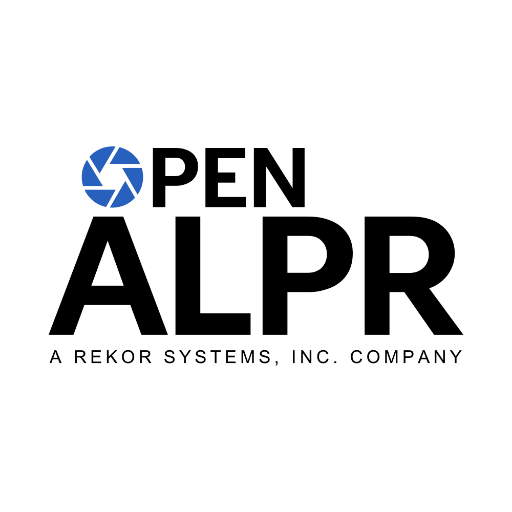Mock sample for your project: OpenALPR CarCheck API
Integrate with "OpenALPR CarCheck API" from openalpr.com in no time with Mockoon's ready to use mock sample

OpenALPR CarCheck API
openalpr.com
Version: 3.0.1
Integrate third-party APIs faster by using "OpenALPR CarCheck API" ready-to-use mock sample. Mocking this API will allow you to start working in no time. No more accounts to create, API keys to provision, accesses to configure, unplanned downtime, just work.
Improve your integration tests by mocking third-party APIs and cover more edge cases: slow response time, random failures, etc.
Description
The OpenALPR CarCheck API allows you to send images to the cloud for processing.
The image will be analyzed for license plates and vehicle make/models. The results
are returned in JSON format
Other APIs in the same category

SqlManagementClient
azure.com
The Azure SQL Database management API provides a RESTful set of web APIs that interact with Azure SQL Database services to manage your databases. The API enables users to create, retrieve, update, and delete databases, servers, and other entities.

AutomationManagement
azure.com

Amazon GameLift
Amazon GameLift Service GameLift provides solutions for hosting session-based multiplayer game servers in the cloud, including tools for deploying, operating, and scaling game servers. Built on AWS global computing infrastructure, GameLift helps you deliver high-performance, high-reliability, low-cost game servers while dynamically scaling your resource usage to meet player demand. About GameLift solutions Get more information on these GameLift solutions in the GameLift Developer Guide. GameLift managed hosting -- GameLift offers a fully managed service to set up and maintain computing machines for hosting, manage game session and player session life cycle, and handle security, storage, and performance tracking. You can use automatic scaling tools to balance player demand and hosting costs, configure your game session management to minimize player latency, and add FlexMatch for matchmaking. Managed hosting with Realtime Servers -- With GameLift Realtime Servers, you can quickly configure and set up ready-to-go game servers for your game. Realtime Servers provides a game server framework with core GameLift infrastructure already built in. Then use the full range of GameLift managed hosting features, including FlexMatch, for your game. GameLift FleetIQ -- Use GameLift FleetIQ as a standalone service while hosting your games using EC2 instances and Auto Scaling groups. GameLift FleetIQ provides optimizations for game hosting, including boosting the viability of low-cost Spot Instances gaming. For a complete solution, pair the GameLift FleetIQ and FlexMatch standalone services. GameLift FlexMatch -- Add matchmaking to your game hosting solution. FlexMatch is a customizable matchmaking service for multiplayer games. Use FlexMatch as integrated with GameLift managed hosting or incorporate FlexMatch as a standalone service into your own hosting solution. About this API Reference This reference guide describes the low-level service API for Amazon GameLift. With each topic in this guide, you can find links to language-specific SDK guides and the AWS CLI reference. Useful links: GameLift API operations listed by tasks GameLift tools and resources

Amazon Elastic Container Registry Public
Amazon Elastic Container Registry Public Amazon Elastic Container Registry (Amazon ECR) is a managed container image registry service. Amazon ECR provides both public and private registries to host your container images. You can use the familiar Docker CLI, or their preferred client, to push, pull, and manage images. Amazon ECR provides a secure, scalable, and reliable registry for your Docker or Open Container Initiative (OCI) images. Amazon ECR supports public repositories with this API. For information about the Amazon ECR API for private repositories, see Amazon Elastic Container Registry API Reference.

AWS Data Pipeline
AWS Data Pipeline configures and manages a data-driven workflow called a pipeline. AWS Data Pipeline handles the details of scheduling and ensuring that data dependencies are met so that your application can focus on processing the data. AWS Data Pipeline provides a JAR implementation of a task runner called AWS Data Pipeline Task Runner. AWS Data Pipeline Task Runner provides logic for common data management scenarios, such as performing database queries and running data analysis using Amazon Elastic MapReduce (Amazon EMR). You can use AWS Data Pipeline Task Runner as your task runner, or you can write your own task runner to provide custom data management. AWS Data Pipeline implements two main sets of functionality. Use the first set to create a pipeline and define data sources, schedules, dependencies, and the transforms to be performed on the data. Use the second set in your task runner application to receive the next task ready for processing. The logic for performing the task, such as querying the data, running data analysis, or converting the data from one format to another, is contained within the task runner. The task runner performs the task assigned to it by the web service, reporting progress to the web service as it does so. When the task is done, the task runner reports the final success or failure of the task to the web service.

AWS Ground Station
Welcome to the AWS Ground Station API Reference. AWS Ground Station is a fully managed service that enables you to control satellite communications, downlink and process satellite data, and scale your satellite operations efficiently and cost-effectively without having to build or manage your own ground station infrastructure.

Amazon WorkMail Message Flow
The WorkMail Message Flow API provides access to email messages as they are being sent and received by a WorkMail organization.

ApiManagementClient
azure.com
Use these REST APIs for performing operations on Cache entity in your Azure API Management deployment. Azure API Management also allows for caching responses in an external Azure Cache for Redis. For more information refer to External Redis Cache in ApiManagement.



